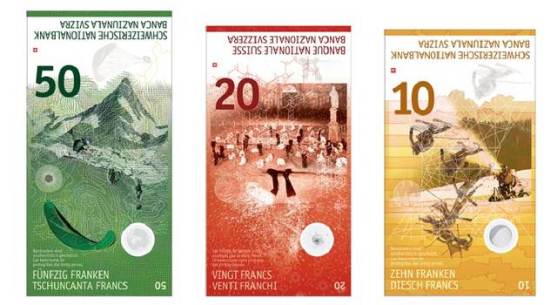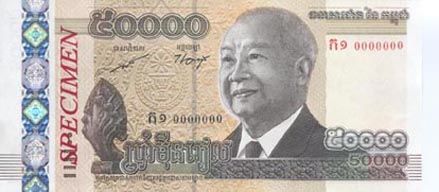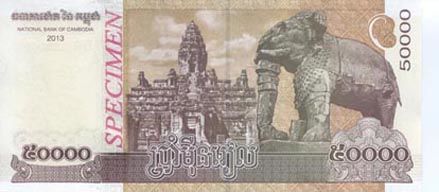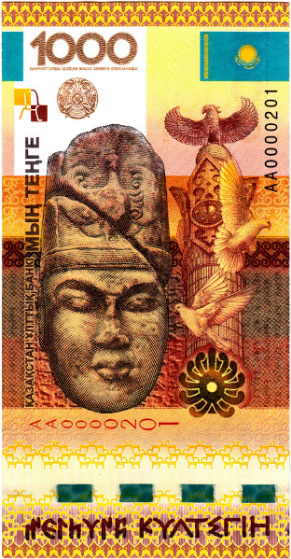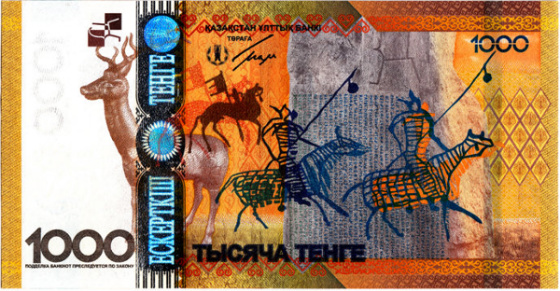 Last January I wrote an article on the new Somali banknotes and why they were postponed. Today I read some news on these new notes on Raxanreeb.com. It seems the new notes could still be issued. Right now the Somali government (or what's left of it) is in talks with the IMF on the introduction of new notes or a whole new currency. It is however still unclear when the final decision will be taken.
Last January I wrote an article on the new Somali banknotes and why they were postponed. Today I read some news on these new notes on Raxanreeb.com. It seems the new notes could still be issued. Right now the Somali government (or what's left of it) is in talks with the IMF on the introduction of new notes or a whole new currency. It is however still unclear when the final decision will be taken.
 While Croatia is licking its wounds after being screwed by the Japanese referee defeated by Brazil last night at the World Cup 2014, the National Bank of Croatia has issued a new commemorative note on 30 May 2014. The 20 kuna note commemorates the 20th anniversary of the introduction of the Croatian currency kuna and lipa.
While Croatia is licking its wounds after being screwed by the Japanese referee defeated by Brazil last night at the World Cup 2014, the National Bank of Croatia has issued a new commemorative note on 30 May 2014. The 20 kuna note commemorates the 20th anniversary of the introduction of the Croatian currency kuna and lipa.
On the commemorative motif: "on the left side of the banknote, at the position of the watermark with the portrait of Josip Jelacic, the microtext "DVADESETA OBLJETNICA HRVATSKOGA NOVCA KUNE I LIPE 2014." runs in thirty-four continuous vertical lines, creating a rectangle with some letters and numbers bolded to form number "20" and the inscription "OBLJETNICA" printed in iridescent colour in three lines over the rectangular base; the dominant colour of the background is reddish violet."
Via
Update: the National Bank also has a commemorative set for sale with the 10 and 20 kuna banknotes!
 The Central Bank of the island state of Vanuatu has introduced three new banknotes for a new polymer series according to this article in the local Daily Post. The switch to polymer has been made mainly due to the humid climate and to prevent counterfeiting. The first three notes which have been issued are the 200 vatu (themed family), 1,000 vatu (themed agriculture) and 2,000 vatu (themed flora and fauna). The notes of 500 and 5,000 vatu are planned to be issued in the next two to three years. The new series is produced by the french company Oberthur on a polymer substrate from Innovia from Australia.
The Central Bank of the island state of Vanuatu has introduced three new banknotes for a new polymer series according to this article in the local Daily Post. The switch to polymer has been made mainly due to the humid climate and to prevent counterfeiting. The first three notes which have been issued are the 200 vatu (themed family), 1,000 vatu (themed agriculture) and 2,000 vatu (themed flora and fauna). The notes of 500 and 5,000 vatu are planned to be issued in the next two to three years. The new series is produced by the french company Oberthur on a polymer substrate from Innovia from Australia.
I haven't been able to find pictures of the new notes yet but they will follow soon I hope.
 On the 1st of January this year Latvia became the 18th country to adopt the euro. Its neigbor Lithuania is poised to be the 19th euro nation, maybe even as soon as 2015.
On the 1st of January this year Latvia became the 18th country to adopt the euro. Its neigbor Lithuania is poised to be the 19th euro nation, maybe even as soon as 2015.
The European Commission has issued a press release following an investigation into the readiness of eight countries to join the euro. Out of those eight (Bulgaria, the Czech Republic, Croatia, Hungary, Poland, Romania, Sweden and Lithuania) only Lithuania meets the criteria for joining.
The Commission is therefore proposing that the EU Council of Ministers decide that Lithuania can adopt the euro on 1 January 2015. The Council will take the final decision on the matter in the second half of July, after EU Heads of State and Government have discussed the subject at the 26-27 June European Council, and after the European Parliament has given its opinion.
 The Khaleej Times reports that the Central Bank of the United Arab Emirates has announced they will issue banknotes with Braille numerical edges as an aid to blind people. "The move is in response to a tweet posted last month by the UAE Foreign Minister Shaikh Abdullah bin Zayed Al Nahyan in which he urged the central bank to use Braille in the UAE’s banknotes." All denominations of banknotes shall soon be printed with special Braille edges.A date of issue hasn't been named yet: first the best design of this new feature will be chosen.
The Khaleej Times reports that the Central Bank of the United Arab Emirates has announced they will issue banknotes with Braille numerical edges as an aid to blind people. "The move is in response to a tweet posted last month by the UAE Foreign Minister Shaikh Abdullah bin Zayed Al Nahyan in which he urged the central bank to use Braille in the UAE’s banknotes." All denominations of banknotes shall soon be printed with special Braille edges.A date of issue hasn't been named yet: first the best design of this new feature will be chosen.
 From the BBC: "The first plastic banknotes in Great Britain will be in use next year when two million £5 notes are issued by Clydesdale Bank branches. The bank is authorised to issue Scottish banknotes, and will release the limited edition notes the year before the Bank of England puts plastic banknotes in general circulation. The new polymer note features the Forth Bridge on its 125th anniversary.
From the BBC: "The first plastic banknotes in Great Britain will be in use next year when two million £5 notes are issued by Clydesdale Bank branches. The bank is authorised to issue Scottish banknotes, and will release the limited edition notes the year before the Bank of England puts plastic banknotes in general circulation. The new polymer note features the Forth Bridge on its 125th anniversary.
In 1999, Northern Bank of Northern Ireland issued a polymer £5 commemorative note celebrating the year 2000. A plastic note was introduced in the Isle of Man in 1983 but was withdrawn in 1988 owing to problems with the ink.
Production of the new Forth Bridge banknote is scheduled to coincide with the 125th anniversary of the structure's opening in March 2015. It also celebrates the bridge's nomination for the UNESCO World Heritage List in 2014. The note also features a portrait of Sir William Arrol, whose company constructed the bridge among many other landmarks in Scotland.
It is smaller than the existing currency, which is made from cotton paper, but will still fit in ATMs, the bank has said. The note will also feature various new security features. Three banks in Scotland, including Clydesdale Bank, and four in Northern Ireland are authorised to issue banknotes."
 Despite earlier news reports that Kuwait was going to issue polymer notes, the Central Bank of Kuwait has just unveiled its new series and as it turns out: they're still made of paper. So much for the reliability of the media
Despite earlier news reports that Kuwait was going to issue polymer notes, the Central Bank of Kuwait has just unveiled its new series and as it turns out: they're still made of paper. So much for the reliability of the media  .
.
From the information leaflet: "The sixth issue of the new Kuwaiti dinar banknotes utilizes the Kuwaiti flag as the inspirational background on all the new banknotes. The new banknotes were designed independently so as to feature the diverse factors that Kuwait is comprised of including its desert and marine life, historical elements such as the ancient Greek ruins in Failaka to the first Kuwaiti coin, cultural items like the traditional wooden Kuwaiti door, industrial features including an oil tanker and refinery, elements that reflect Kuwait’s past commercial activities such as traditional sailing vessels and pearl diving and lastly, architectural landmarks that symbolize Kuwait including the Seif Palace, Kuwait National Assembly Building, Kuwait Towers, Liberation Tower, Grand Mosque and Central Bank of Kuwait’s new building. (...) Every new banknote has a unique background design that is inspired from Islamic art. (...) Each banknotes’ theme dictates its colour. The KD 20 banknote’s main colour is blue because the featured theme includes elements of Kuwait’s marine life. The KD 10 banknote’s strongest colour is orange and light brown so as to reflect the desert theme that runs throughout the banknote. The remaining banknotes all feature one main colour that mirrors the main theme of the banknote itself."
Check out the images below for the design of this beautiful new series. The new banknotes will enter circulation from 29 June 2014.
1/4 dinar
Dominating colour: brown, 110mm x 68mm. Front: Liberation Tower. Back: traditional wooden Kuwaiti door and the first Kuwaiti coin.
1/2 dinar
Dominating colour: green, 120mm x 68mm. Front: Kuwait Towers. Back: Hawksbill sea turtle and a Silver Pomfret.
1 dinar
Dominating colour: grey, 130mm x 68mm. Front: the Grand Mosque. Back: real-life illustration of many influences of ancient Greek civilization in Kuwait’s island of Failaka.
5 dinar
Dominating colour: purple, 140mm x 68mm. Front: new Central Bank building. Back: oil refinery and oil tanker.
10 dinar
Dominating colour: reddish orange, 150mm x 68mm. Front: Kuwait National Assembly building. Back: falcon and a seated camel dressed in Sadu saddle.
20 dinar
Dominating colour: blue, 160mm x 68mm. Front: Seif palace. Back: Al-Boom traditional Kuwaiti dhow and a pearl diver.
A video of the new banknotes and their place in history:
 According to an article in Japan Today, Japan has issued an updated 5,000 yen banknote on 12 May 2014. It has high-tech anti-forgery features and enhanced convenience for visually impaired people. It also has a hologram, which shows different images and colors depending on the angle at which they are viewed.
According to an article in Japan Today, Japan has issued an updated 5,000 yen banknote on 12 May 2014. It has high-tech anti-forgery features and enhanced convenience for visually impaired people. It also has a hologram, which shows different images and colors depending on the angle at which they are viewed.
The new 10 euro note won't be issued for some months. The official introduction will be on 23 September 2014... unless you live in Hamburg and took a taxi last week. Recently 700 of the new banknotes were stolen from a company in Hamburg which uses them to calibrate their banknote sensors. The new notes were then spotted by a taxi driver who got paid with them and noticed something odd.
It provides us with a first glimpse what the notes will look like in real life.
 One of my favourite countries to collect is about to issue a new banknote. The Bank of Thailand has released this press release describing the new 500 baht note which will be issued on 12 May 2014. This is the third note of serie 16. Its basic look (purple and 72x156 mm) is the same as the current 500 baht note but the portrait of King Bhumibol has been updated and several new security features have been added:
One of my favourite countries to collect is about to issue a new banknote. The Bank of Thailand has released this press release describing the new 500 baht note which will be issued on 12 May 2014. This is the third note of serie 16. Its basic look (purple and 72x156 mm) is the same as the current 500 baht note but the portrait of King Bhumibol has been updated and several new security features have been added:
- Colour-shifting ink with latent image
- New watermark
- Hologram foil stripe
- Windowed colour-shifting security thread with moving-boxes animation
- Iridescent Coating
 The Central Bank of Uruguay has announced that an updated design of their 500 peso note has been issued. A couple of new security features have been added, which are explained in this nice video below. A map of Uruguay has been added with the colour-shifting SPARK feature and a perfect register has been added with the number 500. The note is printed by Oberthur.
The Central Bank of Uruguay has announced that an updated design of their 500 peso note has been issued. A couple of new security features have been added, which are explained in this nice video below. A map of Uruguay has been added with the colour-shifting SPARK feature and a perfect register has been added with the number 500. The note is printed by Oberthur.
 Switzerland is working on a new banknote series but the production of these new notes has faced some problems which led to inevitable delays. The new notes were supposed to be issued back in 2010 but are currently delayed until 2015 when the new 50 francs note will be the first to be issued.
Switzerland is working on a new banknote series but the production of these new notes has faced some problems which led to inevitable delays. The new notes were supposed to be issued back in 2010 but are currently delayed until 2015 when the new 50 francs note will be the first to be issued.
An important step has now been taken with the choice for the security paper which will be used. Swiss franc banknotes are regarded as one of the safest currencies with regard to security measures taken so this is obviously a big deal. Not surprisingly Switzerland has chosen the paper from their own factory Landqart for the new series. The new notes wil be printed on the Durasafe paper which was first used by Morocco for their latest 25 dinar banknote.
Below the final drafts of the design by Manuela Pfrunder. The issued banknotes won't be exactly the same but the final design won't be made public until shortly before they're issued.
 Banknotenews.com reports that a new 50,000 riel commemorative note has been issued by the National Bank of Cambodia. The note has reportedly been issued on 6 May 2014. It features a portrait of the late King Norodom Sihanouk on the front and a picture of the Koh Ker ruins and a baby elephant on the back.
Banknotenews.com reports that a new 50,000 riel commemorative note has been issued by the National Bank of Cambodia. The note has reportedly been issued on 6 May 2014. It features a portrait of the late King Norodom Sihanouk on the front and a picture of the Koh Ker ruins and a baby elephant on the back.
 The Central Bank of Kuwait will start issuing polymer banknotes from 29 June 2014. This day marks the beginning of the Ramadan. The first shipment of the new banknotes which are produced by De La Rue has already arrived in Kuwait.
The Central Bank of Kuwait will start issuing polymer banknotes from 29 June 2014. This day marks the beginning of the Ramadan. The first shipment of the new banknotes which are produced by De La Rue has already arrived in Kuwait.
Update 21 May 2014: No they haven't... The new series is still made of paper.
Update 16 June 2014: A video with the story behind the new notes:
After 2011 and 2012 the winner of Banknote of the Year 2013 is again a note from Kazakhstan. The 1,000 tenge designed and produced by De la Rue is the winner of the annual competition where member of the IBNS can vote for the nominees. This accomplishment makes the whole series a very successful one. I have to admit that I like the design of this particular note a lot better than the previous winners. So my congratulations to the National Bank of Kazakhstan!
« Vorige Pagina |
Toon berichten 661-675 van 937 |
Volgende Pagina »
 Last January I wrote an article on the new Somali banknotes and why they were postponed. Today I read some news on these new notes on Raxanreeb.com. It seems the new notes could still be issued. Right now the Somali government (or what's left of it) is in talks with the IMF on the introduction of new notes or a whole new currency. It is however still unclear when the final decision will be taken.
Last January I wrote an article on the new Somali banknotes and why they were postponed. Today I read some news on these new notes on Raxanreeb.com. It seems the new notes could still be issued. Right now the Somali government (or what's left of it) is in talks with the IMF on the introduction of new notes or a whole new currency. It is however still unclear when the final decision will be taken. While Croatia is licking its wounds after being
While Croatia is licking its wounds after being 

 The
The  On the 1st of January this year Latvia
On the 1st of January this year Latvia  The
The  From the
From the 
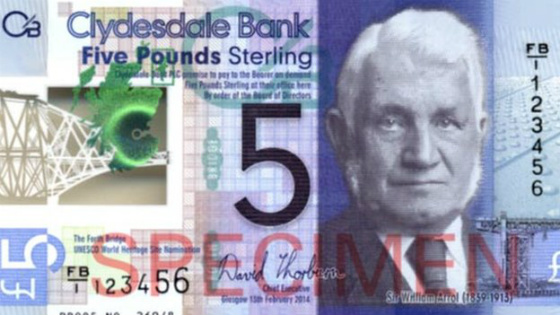
 Despite
Despite 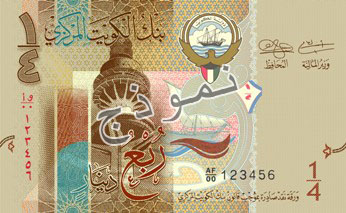
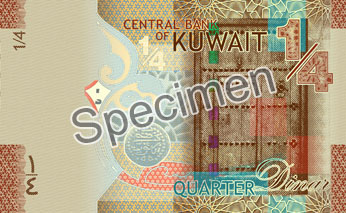
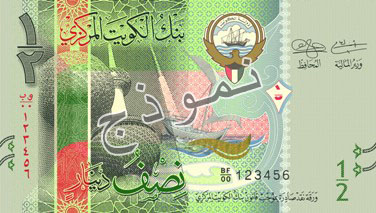
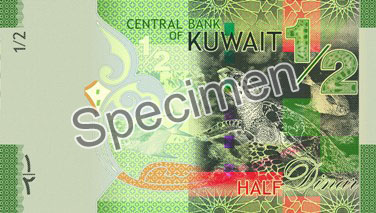
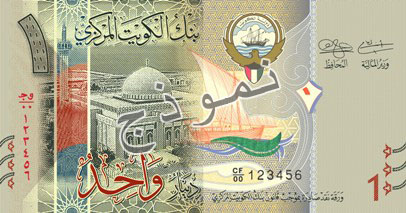

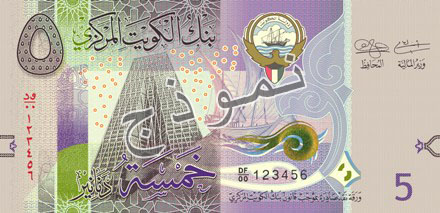
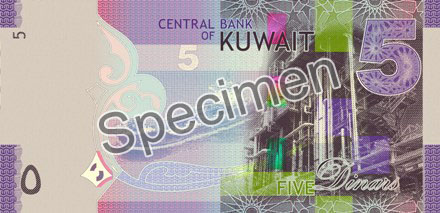
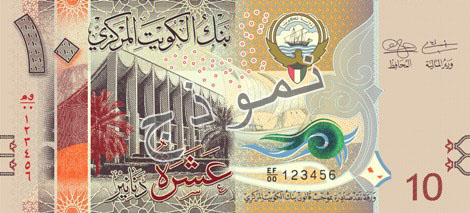
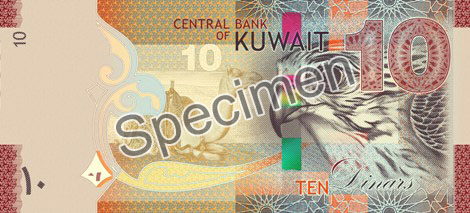
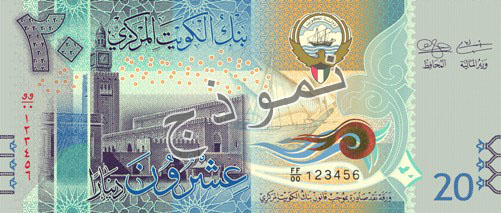

 According to an article in
According to an article in 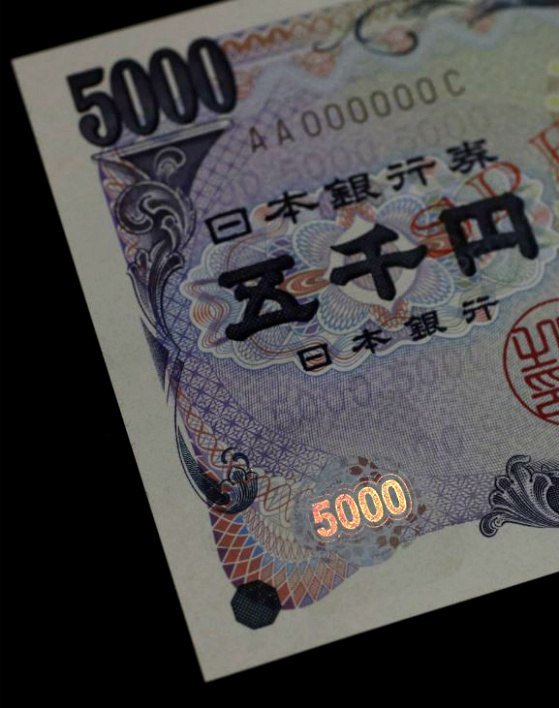
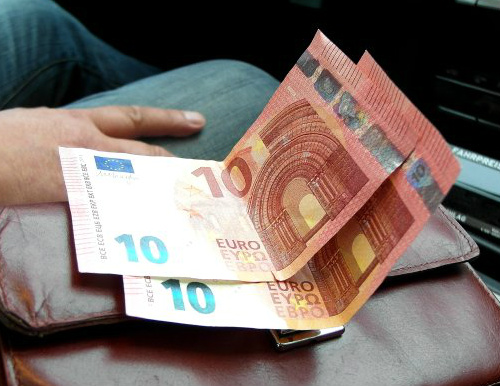
 One of my favourite countries to collect is about to issue a new banknote. The
One of my favourite countries to collect is about to issue a new banknote. The 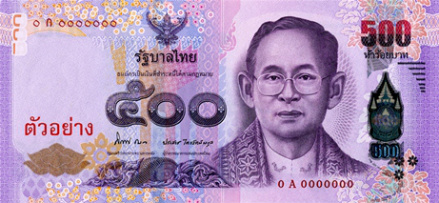
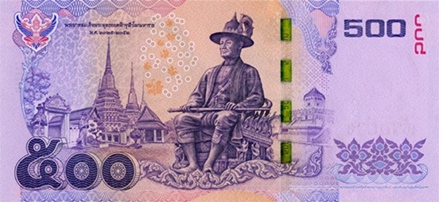
 The
The  Switzerland is working on a new banknote series but the production of these new notes has faced some problems which led to
Switzerland is working on a new banknote series but the production of these new notes has faced some problems which led to 